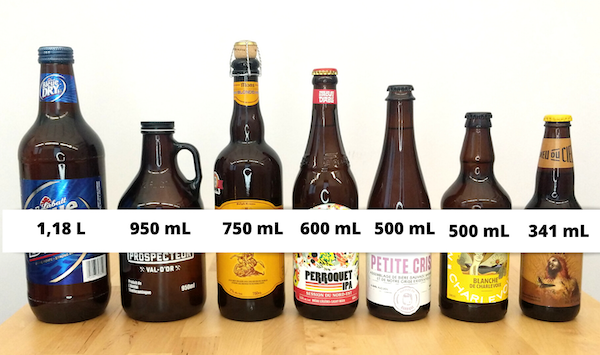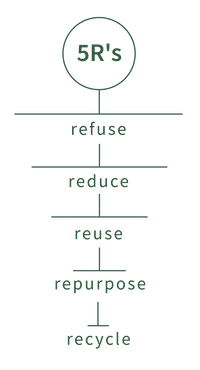Published on
A spotlight on all the potential of refillable reusable drink bottles!
Whereas recycled materials have to be chemically transformed in order to be reintroduced into the manufacturing process, refillable containers can be cleaned and refilled multiple times!
Let’s have a look at the different kinds of refillable containers available in Québec and explore how to get the most out of them.
There are two types of drink containers in stores: refillable (for example, the iconic brown beer bottles), that you can return for a refund through the deposit refund system and recyclable (plastic bottles, aluminum cans, etc.), some of which you can return for a refund.
There are also lesser-known refillable containers on the market, like 10- and 20-litre water bottles, La Pinte and Laiterie Lampron milk bottles and Fjord Distillery gin bottles.

How does the deposit refund system encourage reuse?
When consumers bring their empty drink containers to a retailer, they can get the bottle deposit (which was paid on purchase) refunded. Bottling companies, brewers and distributors collect the empty refillable bottles, which are then transported to a cleaning plant before being refilled. Refillable bottles can be reused between 10 to 25 times!
Why prioritize refillable over recycled?

Recyclable containers are prepared and sold to recyclers or companies that crush them up to be used in their manufacturing process, often using a huge amount of energy, impacting our health and our planet.
Throughout every step of their life cycle, from raw material extraction to recycling/disposal, refillable containers have a smaller environmental footprint than single-use recyclable ones.
A 2015 life cycle assessment (in French) ranks refillable containers as the most eco-friendly option out there. They have the smallest impact on climate change and human health, requiring far fewer resources, even when you consider transportation and cleaning.
Let’s modernize the deposit refund system!
If you can believe it, the beer and soft drink deposit refund system has been around since 1808 in Québec. That’s over 200 years of refillable drink containers!
What’s so great about the deposit refund system from a waste management perspective, is that it very effectively sorts plastic, glass and metal containers from the get-go, reducing the potential for contamination that can often happen in a recycling bin.
But unfortunately, there has been a significant drop in the number of refillable containers over the years. In 2009, 83% of beer bottled in Quebec was in refillable containers, compared to only 32% in 2017. The pandemic has made the situation worse.
At Équiterre, we want to see this trend reversed. We believe that expanding the deposit refund system is a great opportunity to promote refillable containers.
A proposed regulation to modernize Québec’s deposit system is currently underway. The proposal would expand the deposit refund system to include “ready-to-drink” plastic, glass and metal beverage containers (e.g. ciders, cocktails, etc.) between 100 ml and 2 litres.
Does this mean that it won’t be long before we see refillable wine and liquor bottles (or even pints of milk) on shelves? That’s what we’re hoping for! To support this initiative, Équiterre is currently participating in consultations on the proposed regulation to modernize the deposit refund system.
In the meantime, we encourage you to opt for the brown bottle on your next beer run!
Amélie Côté
Analyst, Reduction at the source
To go further:
Watch Radio-Canada’s segment on the decline of the brown bottle decline (French only)





